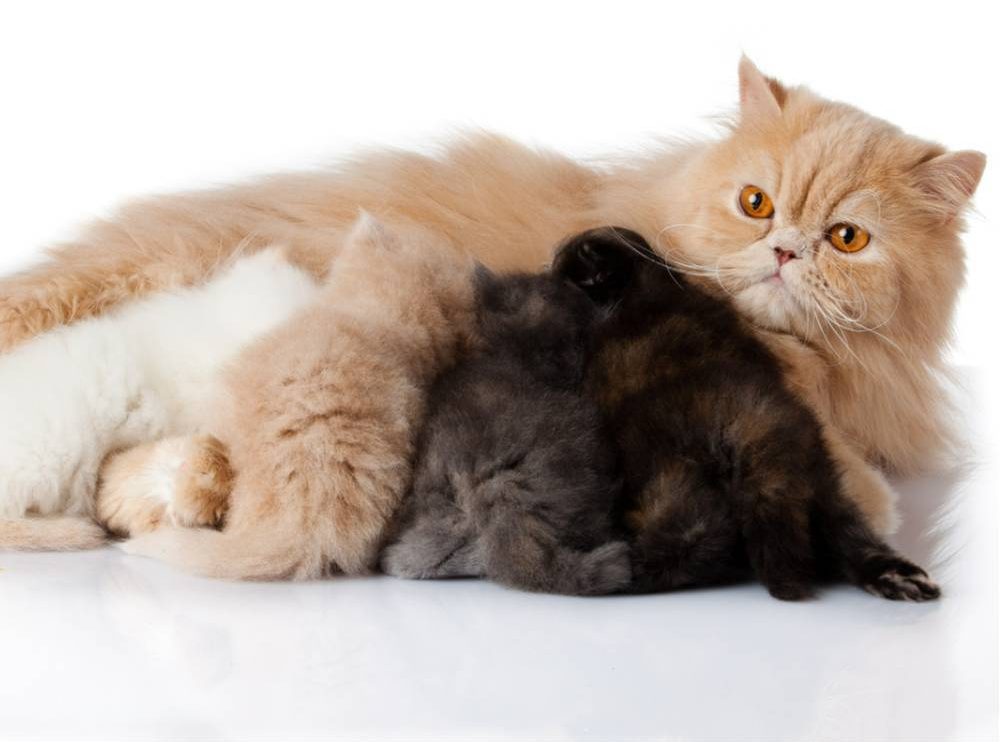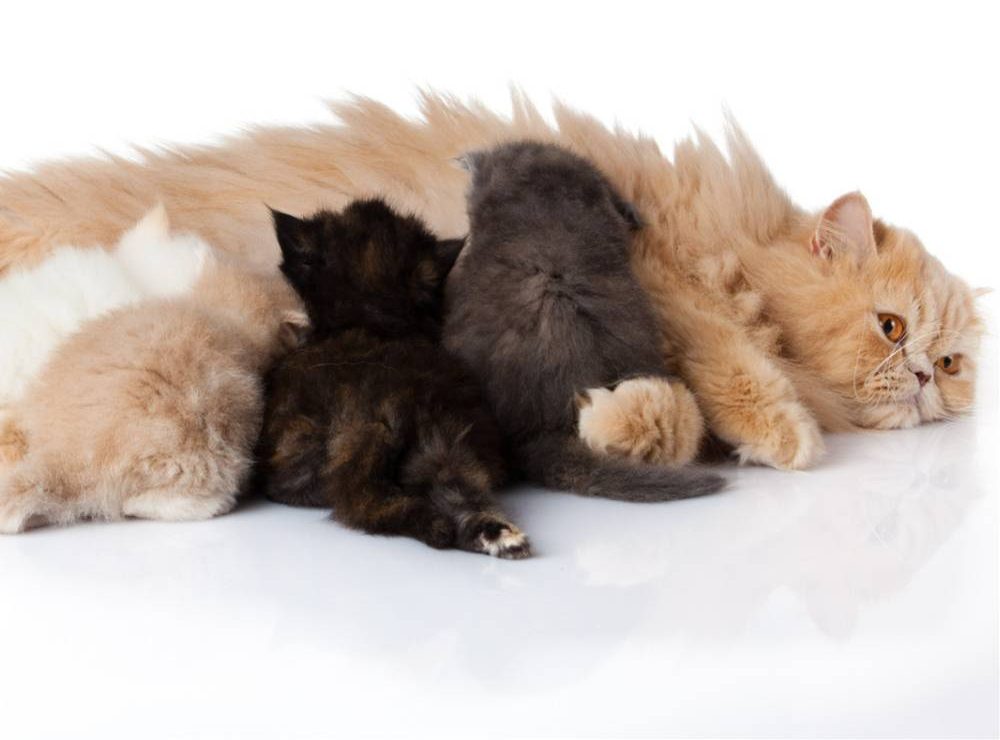
So, you’re thinking about breeding Persian cats. This venture can be both exciting and rewarding. However, this kind of venture requires careful planning and consideration.
Becoming a breeder includes ensuring your cats’ well-being, and you see to their well-being. These two things are imperative in your breeding program. You want happy, healthy cats that produce kittens that meet breed standards, make good pets, or show cats.
In this article, we’ll look at some factors you should consider before breeding your Persian cats. Many depend on whether you go into business as a breeder or want kittens to add to your family.
Breeding Persian Cats: Understanding the Breed

Do you know anything about this breed? Before you start breeding Persian cats, you may want to study them. Knowing their history, health issues, and personalities can help immensely with your breeding program.
In the breeding world, you’ll need to adhere to breed standards. What are these standards? Breed standards define the physical characteristics of purebred Persian cats. These characteristics include head type, body shape, and coat length. If you breed your Persian cats to meet these standards, you help improve the breed and produce kittens that are true to type.
Here are some breed standards from The Cat Fanciers Association.
General – The ideal Persian should be heavily boned and well-balanced. They have a sweet expression with large, round, wide-set eyes in a large round head. Their long thick coats soften their look and add to the appearance of a large, round cat.
Head – The Persian’s head should be large with a round underlying bone structure. Their large heads should sit on a short, thick neck. The skull structure should be smooth and round to the touch. When looking at the Persian’s profile, the prominence of the eyes is apparent. Their forehead, nose, and chin should be in vertical alignment.
Nose – Their noses are short, snubbed, and broad, with a break centered between the eyes.
Cheeks – They have full muzzles, not overly pronounced, smoothing into the cheeks.
Jaws – Their jaws should be robust and broad.
Chin – Their chins are full and rounded.
Ears – Their ears are small with round tips that tilt forward. They are set far apart and sit low on the head, fitting into the rounded shape of the head.
Eyes – Their eyes should be large, round, and brilliant in color. They are set level and far apart, giving a sweet expression to the face.
Body – Persian cats should have a stocky body that sits low on their legs with a broad, deep chest. They should also be stocky through their shoulders and butt. Their midsection should be round but not overweight.
Legs – Their legs should be short, thick, and strong.
Paws – Their paws should be large, round, and firm with toes carried close, five in front and four on their rear.
Tail – Their tails should be in proportion to body length.
Coat – The Persian coat is long and thick and stands away from the body. The fur should have a fine texture. Their hair is long all over the body with an immense ruff, continuing into a deep frill between the front legs. Their ears and toes should have tufts of hair, and their tails should be thick and full.
Transfer to AOV – AOV means Any Other Variety. This classification is for colors not accepted for championship status.
Disqualify – Persian are disqualified if they have locket or button spots. I believe this is in tabby patterned cats. Their tails can’t be kinked or have any other abnormalities. Persian cats can’t be polydactyl for show. They cannot show weakness or any apparent spine deformity in their hindquarters. Also, any deformation of their skull will be disqualified. If their nose isn’t lined up evenly in their face, that is also a disqualification. Crossed eyes are not accepted, either.
Colors – There is a massive list of color standards and their disqualifications. I can’t list all these in this article, so you should check out the Cat Fanciers Standards page here.
Breeding Persian Cats: Health Considerations
A successful breeding program needs healthy, happy cats so you should ensure your cats’ health and well-being. Persian cats are prone to some specific health issues. Some of these issues are genetic such as These issues are polycystic kidney disease (PKD), Progressive Retinal Atrophy (PRA), Idiopathic Seborrhea
Polycystic Kidney Disease (PKD) – This condition is inherited. Fluid filled cysts that are present from birth develop on the kidneys. They multiply and grow larger over time and end up causing kidney failure. There are other breeds of cats that can have this as well, but the Persian breed has the highest incidence of it out of all breeds. One in three Persians are affected.
Progressive Retinal Atrophy (PRA) – PRA is a group of degenerative eye diseases affecting the retina and is hereditary. There are two types of this disease, early-onset, which affects kittens, and late-onset, which affects adult cats. This condition is caused by an abnormal development of the retina’s photoreceptor cells and can lead to blindness.
Idiopathic seborrhea – This is a skin disorder characterized by red, irritated, itchy skin. It also causes an overproduction of a waxy, oily substance from the skin glands. Persian cats with idiopathic seborrhea will have clumpy, stinky fur. They will scratch all the time. This issue can be hereditary or may be caused by dietary problems, allergies, fungal infections, parasites, or endocrine disorders.
Persian cats are also prone to Brachycephalic Airway Syndrome and Hypertrophic Cardiomyopathy. Other issues include Dental disease, Heat Sensitivity, Facial Dermatosis, Ringworm, and Obesity. These aren’t hereditary, but still need to be considered.
It would be best if you were sure your cats don’t have any genetic disorders so that you may produce healthy kittens. Your cat should also have regular vet checkups and vaccines to remain healthy.
Breeding Persian Cats: Genetics and Pedigrees

To be a successful breeder you should understand the genetics and pedigrees of your Persian cats. Persian cats come in over sixty colors and patterns. Certain traits are passed from generation to generation. If both parents carry the gene for a certain color their kittens will be that color as well. If you’d like to learn more about Persian cat color genetics you can look here.
You should research the pedigrees of any Persian cat you may want as your breeding pair. Pedigrees are like family trees for cats. Pedigrees can help you track the lineage of cats and see what genes they may carry for certain traits. It will also allow you to know if your cats may be too closely related to become breeding pairs.
Breeding Persian Cats: Choosing a Breeding Cat
There are several factors you should consider when choosing your breeding cats.
First, you’ll need to know if your cats meet breed standards and have pedigrees that support your breeding program.
Second, you’ll need to consider your cats’ personalities and health. Cats with friendly, affectionate, temperaments are the best choice. You’ll also need to make sure as we stated in another section in this article that your cats are free from genetic disorders.
Third, the age of your breeding cats and if they are old enough you should know about other litters of kittens they have born or fathered. Persian cats don’t reach maturity until they are fifteen to eighteen months old. Female Persian can be bred until they are about five years old if they’ve had healthy pregnancies and births. Male Persian cats can breed until they are around ten years old.
Fertility can be an issue as your cats age. If there are issues you may consider retiring your older breeding cats and use your younger breeding pairs. This is something you should consider when you begin your breeding program. Cats are living creatures and will age, you will need new, younger cats to continue your business. You can work this into your breeding program by keeping certain cats that are born to you and adding new blood to be sure you still have the diversity needed to keep from inbreeding.
Breeding Persian Cats: Breeding Techniques
The actual breeding of your cats can be done by several techniques. These include natural breeding, artificial insemination, and embryo transfer.
Natural Breeding – This takes place by allowing a male and female to mate naturally. This would involve taking the pair you want to breed when the female is in heat and leaving them together for a certain amount of time.
Advantage – This is the most natural method.
Disadvantage – Injury to your cats can happen as they aren’t gentle when they mate.
Artificial Insemination – This technique involves collecting the male’s sperm and inserting it into the female with a syringe.
Advantages – ensures high-quality sperm and prevents the spread of sexually transmitted diseases.
Disadvantage – There is a chance of superovulation (ovarian hyperstimulation syndrome). This happens when a female cat is given drugs and her ovaries are overstimulated too much. Signs and symptoms include abdominal distention and discomfort, enlarged ovaries, the accumulation of fluid in the peritoneal cavity, causing abdominal swelling, and other complications of leaky blood vessels or enhanced vascular permeability.
Embryo Transfer – This is where fertilized eggs are collected from a female Persian cat and transferred to a surrogate mother.
Advantage – This method allows breeders to produce more kittens from one pair of cats.
Disadvantage – The downside to this is that the process requires specialized equipment and expertise.
Preparing for Kittens Arrival
You’ll need to prepare the mother cat’s living area and arrange veterinary care. The queen will need a safe and comfortable place to give birth and raise her kittens. You should be sure the area is hazard free. Hazards can be as simple as an electrical cord or toxic plants.
A nesting box, heating pad, and kitten formula should be on hand before the kittens arrive so that they are safe and comfortable. You should have a vet that you can call in case of emergency, but you’ll also need a vet for the aftercare of the mother and kittens. This included vaccinations and deworming of the kittens.
We did an article on Persian cats and how long it takes for a Queen to give birth. You can read it here.
Selling Your Kittens
Kittens are ready to go to new homes at twelve weeks of age. You’ll want to make sure any potential buyers are a good fit and that your kittens will be loved when they go to their new forever home. You should screen potential buyers with care. This should include conducting interviews and going to their home for a visit. This will let you know if they are the right fit for one of your kittens. You should also be prepared to inform buyers about the Persian cat breed. Including personality, grooming needs, and health issues that may crop up.
Conclusion
As you can see it takes a lot of time and work to have a Persian cat breeding program. From understanding the breed, to learning your cats’ genetics and pedigrees, to the actual breeding and birthing processes, to raising and selling your kittens, you have a lot to consider before you decide whether you want to breed cats. Breeding Persians isn’t like your standard job and the best cats are raised and cared for by the people who breed them and bring them into the world. After reading this article do you think you’d be up for the task? What about any of you who are breeders already, do you have useful tips for would-be breeders?